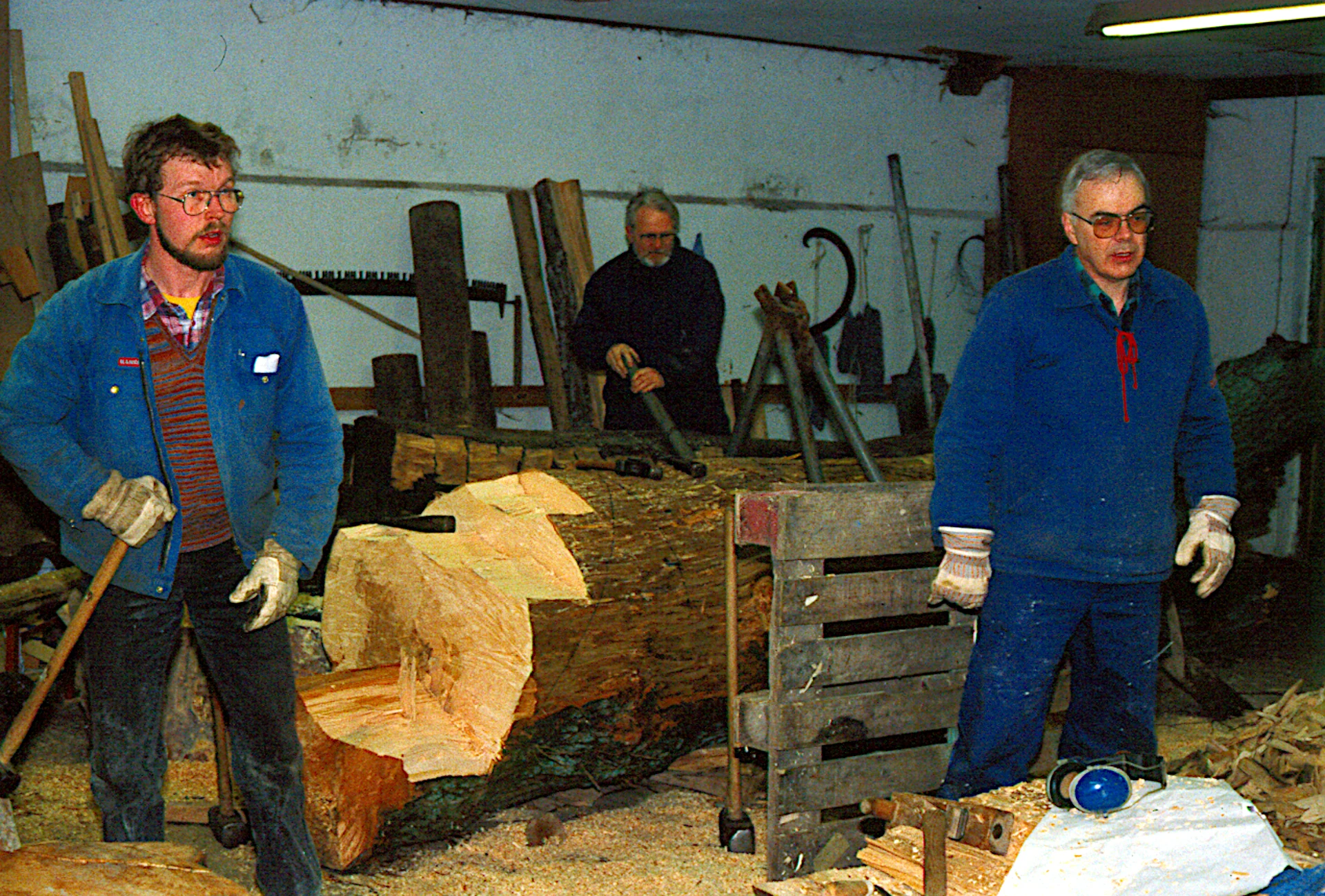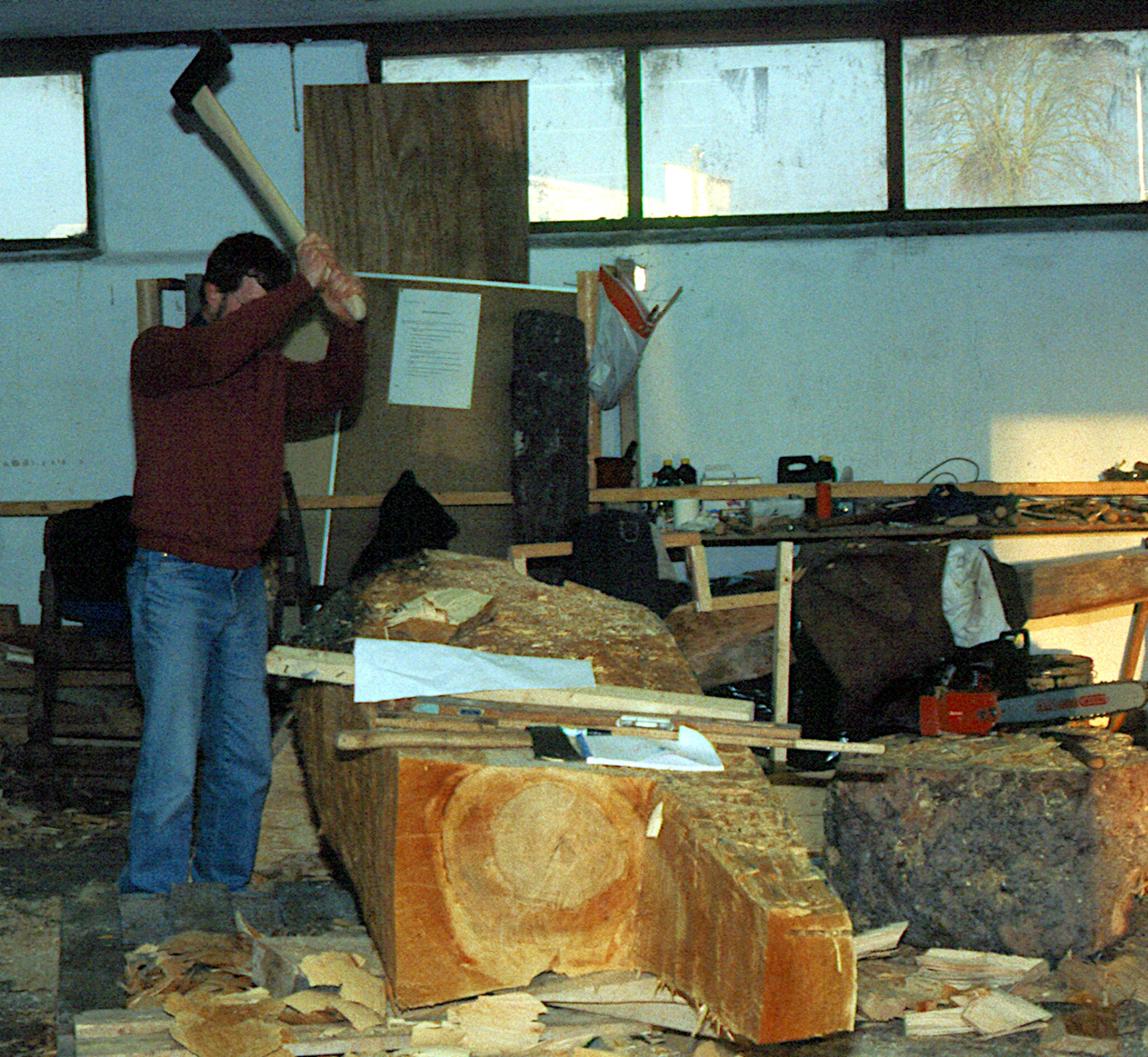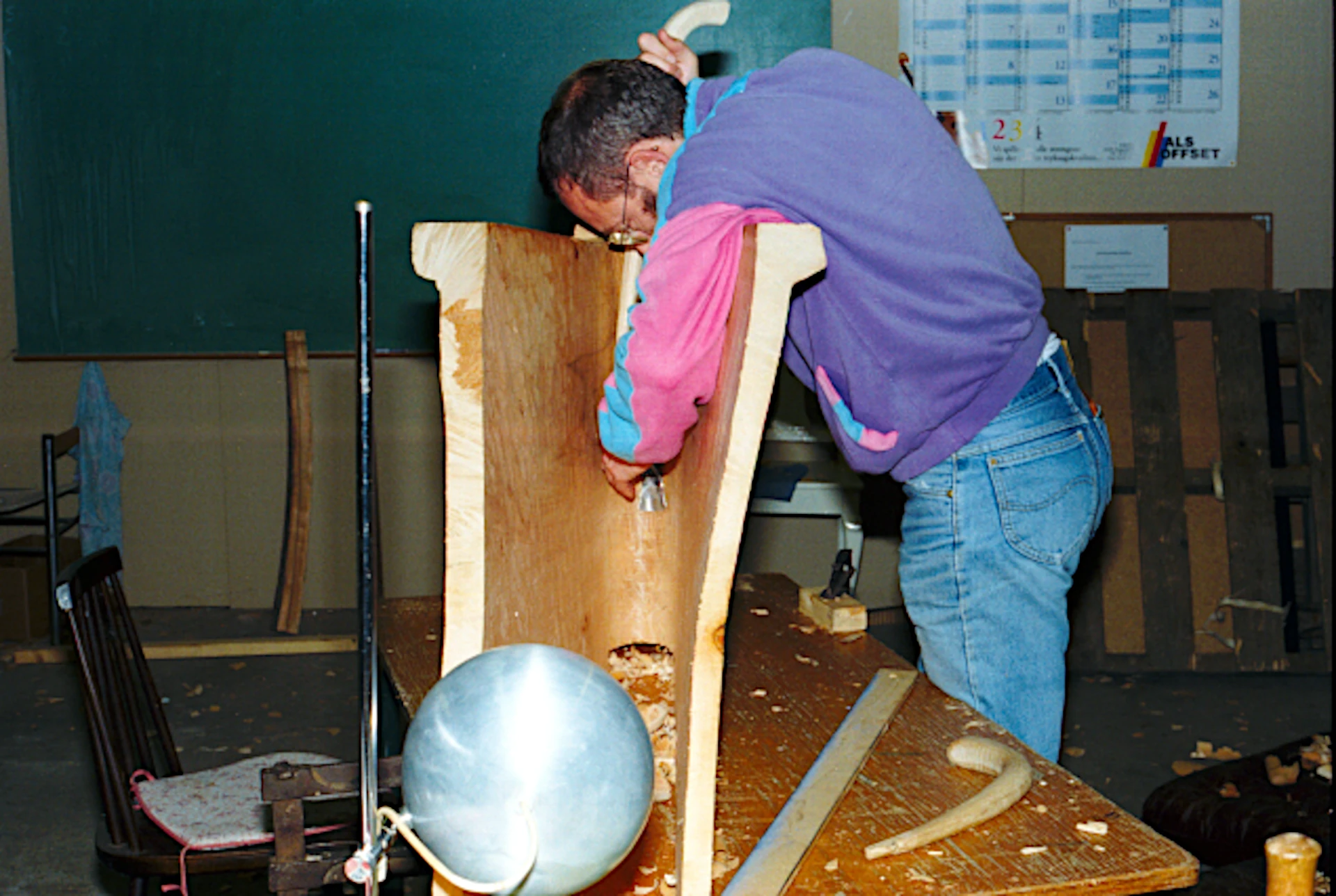Adaptation
To carve the stems, you needed a short piece of whole log with a length of about 2 metres and a diameter of up to 1 metre. The Polish logs were of insufficient diameter, so we had to get local wood for these stems. One member donated a linden tree that was close to his house. This tree had a sufficient diameter and no large branches in the first 5 metres. This tree was a large-leaved lime (Tilia platyphyllos), while the rest of the boat was built from small-leaved lime (Tilia cordata)[1].
An undecided design of the upper horns' connection to the stems caused a lot of discussion. There were three possibilities. The first possibility was that the upper horn was part of the stem and bent in heat after carving. The second possibility was that the upper horn had been contained in a branch from the trunk. And finally, the third possibility was that the horn was a separate part that had been mounted on the stem, as was the case with the lower horn.
The possibility of a branch was first investigated, but neither of the first two bows we roughly carved could be used, as rot appeared in the gap between branch and trunk and in the core wood of the trunk.
We decided to try to form the curved horn by steaming the horn that was carved as part of the log. A steam generator in the form of an oil-fired boiler was constructed by removing the overboiling fuse and we let the steam from the boiler flow into a hose from a tractor tyre that enveloped the horn. After a few hours in the ‘smoke and steam’, we began to curve the horn according to a doctrine that included the curved shape. It went well for a while, but then the horn broke at a crack. A dramatic attempt had failed.
At this point we learnt that there had been heartwood in the middle of the bow as well as in the upper horn. This meant that either the upper horn was formed by a branch extending from the trunk containing the bow, or the upper horn was a loose part attached to the bow. We chose the latter solution.
The actual carving of the bows was a lot of work, not least because of the above-mentioned experiments and because the bows had to be carved quite far before the quality of the wood could be ascertained.
Two logs had to be discarded along the way. One finished log weighed 20 kg.






